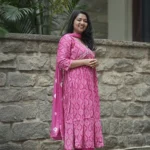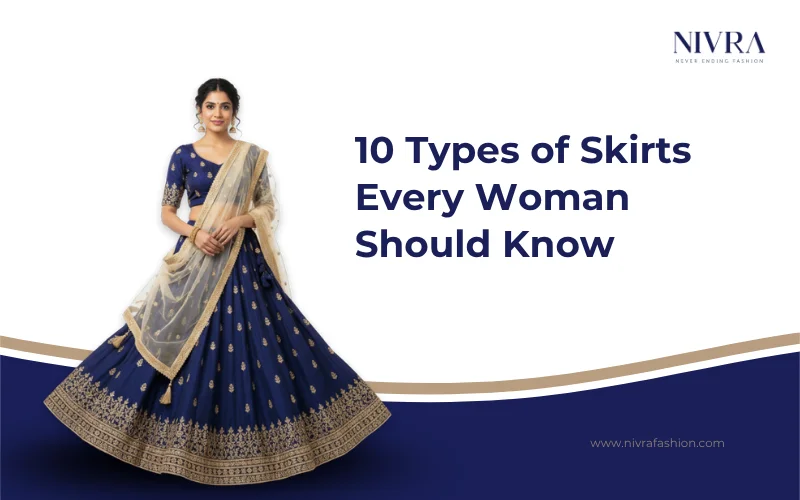Mashru silk holds a special place among Indian fabrics, which is known for its beautiful look and practical use. It is a unique mix of silk and cotton, giving you the shiny appearance of silk along with the soft, breathable comfort of cotton. Here in this article, we have covered what is Mashru silk, its history, how it is made, its unique features, and its uses.
What is Mashru Silk?
Mashru silk is a special type of fabric made by weaving silk and cotton together. The shiny silk threads are on the outside, giving it a rich and glossy look, while the soft cotton is on the inside, making it comfortable to wear. Mashru silk, which originated in regions like Gujarat and Rajasthan, has become a well-loved fabric among the many traditional Indian dress materials.
History of Mashru Silk
Mashru fabric is known for its bright, colourful threads and is mainly made in the Kutch and Patan areas of Gujarat. In earlier days, the port town of Mandvi in Kutch was one of the main places where this fabric was made.
The word “Mashru” comes from Arabic and means “permitted.” This name has an interesting background. In Islam, men are not permitted to wear clothes made entirely of silk, as silk is not supposed to touch their skin. However, as Mashru fabric has cotton on the inside and silk on the outside, the silk never touches the skin directly, allowing them to wear it.
Over time, both Muslim and Hindu communities in Kutch began using this fabric. Mashru also gained popularity in countries like Turkey, Persia, and other Middle Eastern regions because it allowed people to wear silk-like clothes without going against their religious beliefs. Also, the inner cotton fabric made it comfortable to wear in hot desert climates, as it was soft and absorbent.
Process of Making Mashru Silk
Mashru fabric, made using cotton and silk, involves a special weaving method. The weave uses cotton threads for the weft (horizontal yarns) and silk threads for the warp (vertical yarns), which appear on the outer surface. To give the fabric strength while maintaining the silk’s shine, four to eight cotton wefts are used for every silk warp, depending on how fine the fabric is meant to be.
Once the weaving is done, the fabric is washed in cold water and then gently beaten with wooden hammers while still damp. After that, a paste made from wheat flour, known as glazing, is applied to the folds of the fabric. This helps keep the texture of the freshly woven cloth even during the dyeing process. The fabric is then hammered again and pressed tightly to finish this preparation step.
Next comes the dyeing process. Artisans use natural vegetable dyes like indigo (blue), logwood (purple), madder (pink and rose), and rhubarb (orange and yellow). These dyes give rich, vibrant colours that actually deepen and become more beautiful with time, making them a favourite among craftsmen.
Traditionally, Mashru was known for its striped or dotted patterns, which matched the classic look of the fabric. Today, it is available in a wide range of colours and modern designs, including bootis (small motifs) and playful prints.
As the cotton and silk threads are interwoven and alternated, Mashru silk fabric looks unique and is stronger and longer-lasting than many other silk fabrics.
Features of Mashru Silk Fabric
Mashru silk offers many features, such as:
- Rich look: The Mashru silk fabric has silk on its outer side, which gives it a smooth, shiny, and stylish look. It is a perfect fabric for festive wear and special occasions.
- Soft and comfortable: As Mashru silk has cotton on the inner side, the fabric feels soft, allows your skin to breathe, and is comfortable to wear even in hot weather.
- Strong and durable: The mix of cotton and silk makes the fabric sturdy, less likely to tear or stretch, and hence will last longer.
- Eco-friendly choice: Mashru is made with natural dyes and traditional hand-weaving techniques, which makes it a more sustainable and eco-friendly fabric.
Mashru Silk Uses
Given below are some of the common Mashru silk uses
- Clothes: You can find Mashru silk sarees, blouses, skirts, lehengas, and kurtas.
- Accessories: Mashru silk fabric is also used to craft accessories like wallets, slingbags, and pouches to add a rich and unique touch.
- Home decor: These days, you can also find cushion covers, quilts, and table runners that use Mashru fabric.
Caring for Mashru Silk
You can hand-wash Mashru silk fabric gently in cold or lukewarm water, or use a washing machine on a slow rinse setting. Avoid drying it under direct sunlight to keep its shine, as too much sun can dull the fabric’s glossy finish.
Mashru Silk in Today’s Times
As traditional methods have become too costly, these days, Mashru fabric is mostly made using power looms instead of handlooms. Also, to make the fabric more affordable, many artisans are now using budget-friendly materials like rayon and other synthetic fibres instead of pure silk.
Mashru is also being created in bold, solid colours, featuring patterns like stripes and Ikat. The weavers are experimenting more by blending traditional Bandhani designs with Ikat, giving the fabric a fresh and modern twist.
Takeaway
More than just a fabric, Mashru silk is a true blend of tradition, culture, and skilled craftsmanship. Whether you are getting ready for a festive occasion or want to add a stylish touch to your casual outfit, Nivra has an exclusive collection of Mashru silk accessories, including sling bags, pouches and wallets for women.
Related Topics
| What is Ajrakh Print | Best Fabrics for Kurtis |
| Front Kurti Neck Designs | Difference Between Kurta and Kurti |
Frequently Asked Questions on What is Mashru Silk
What is Mashru silk made of?
Mashru silk is a blend of silk and cotton, with the shiny silk surface on one side and a soft, comfortable cotton feel on the other.
Is Mashru silk eco-friendly?
Yes, Mashru silk is an eco-friendly fabric that is woven on handlooms and is usually dyed with natural colours.
Can we wear Mashru silk in summer?
Yes, Mashru silk is an excellent fabric choice for summer. It has silk on the outside for a smooth look and cotton on the inside, offering a cool, soft, and breathable effect, making it perfect for hot weather.













